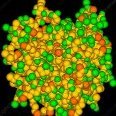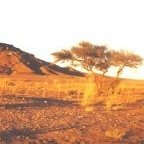Merely reporting the weather in my area.....
-
Recently Browsing 0 members
- No registered users viewing this page.
-
Topics
-
Popular Contributors
-
Latest posts...
-
12
Don't Eat Jew Food! Says Hamas leader from...Beirut
Never seen it in cans but Villa used to have it in the refrigerated section (in plastic containers). -
17
Report Bangkok Cab Incident Sparks Debate on Passenger Rights
No doubt the driver is wrong, but personally I wouldn’t feel comfortable making the driver sit in a Bangkok traffic jam for the amount of money they earn from the ride. Unlike the “hail” taxi’s they don’t charge more for sitting in traffic. They also have to pay a slice of the earnings to the app. If an app based driver gets caught in a long traffic jam I usually up the tip at the end to compensate. Some extra baht will mean a lot more to them, than me. -
103
Report Vietnamese Sex Workers Surge in Bangkok Amid Visa Policy Concerns
Thai youth have few opportunities certainly nothing that *education* has given them. Many become indebted early in life. Thai family can be burdensome. It often takes years for Arts students graduating from even the top three universities to land decent jobs. By decent jobs I mean jobs in the big mango starting at 14k. -
19
US court blocks Trump's sweeping tariffs, citing overreach of authority
They didn't elect Putin, just a Putin stooge, Dmitry. In the US, if you throw political opponents out of windows there will be consequences, even with a cabinet full of clowns.- 1
-

-
37
Trump Administration Halts New Student Visa Interviews Amid Social Media Vetting Push
And this from the self proclaimed champions and advocates of free speech. George Orwell’s thought police is now a real thing, apparently. -
36
US Cracks Down on Foreign Censorship: New Visa Policy Targets Free Speech Violators Abroad
First golden rule of debate is never throw insults but there again you in a class of your own.
-
-
Popular in The Pub
-











Recommended Posts
Create an account or sign in to comment
You need to be a member in order to leave a comment
Create an account
Sign up for a new account in our community. It's easy!
Register a new accountSign in
Already have an account? Sign in here.
Sign In Now